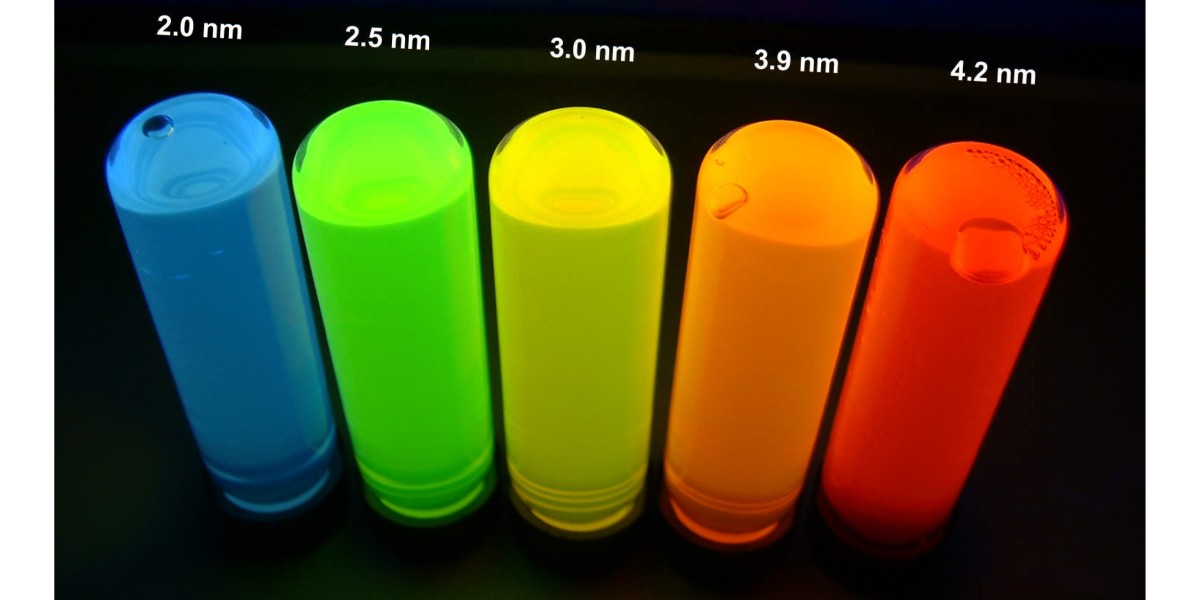The field of medical imaging has undergone a remarkable transformation over the past few decades. Thanks to technology, we can now see inside the human body more clearly and accurately than ever before. One of the most promising innovations in this domain is the use of quantum dots (QDs). These tiny, luminescent nanoparticles have the potential to revolutionize the way we approach medical imaging. In this article, we'll deeply investigate QDs and how they are instrumental in advancing the field of medical imaging.
The Basics of Quantum Dots
Before we dive into their applications in medicine, it's essential to understand what these dots are and how they work. QDs are nanometer-sized semiconductor particles that are often made of materials like cadmium selenide, lead sulfide, or indium arsenide. These materials possess unique quantum mechanical properties that make QDs fascinating for a wide range of applications.
Quantum Mechanics at the Nanoscale
At the heart of QDs’ incredible properties lies the principles of quantum mechanics. In essence, QDs are so tiny that they exhibit quantum confinement effects. This means that the behavior of electrons and holes within the dots adhere to the laws of quantum mechanics, not classical physics.
Tunable Emission
One of the most remarkable features of these nanometer-sized particles is their tunable emission spectra. The size of a dot directly influences the wavelength of light it emits. This property can be harnessed to create QDs with precisely controlled colors, making them incredibly useful for imaging applications.
High Quantum Yield
QDs have high quantum yields, meaning they efficiently emit light when excited. This efficiency makes them an excellent choice for fluorescence-based imaging techniques.
What is the role of QDs in medical imaging?
Now that we've covered the fundamentals, let's explore the role of QDs in the realm of medical imaging.
Fluorescent Labeling for Cellular Imaging
One of the most significant applications is their use in cellular imaging. Traditional organic dyes and fluorescent proteins have been widely used for this purpose, but quantum dots offer several advantages.
Improved Photostability
These nanoscale particles are highly photostable, meaning they can withstand prolonged exposure to light without fading. This is a crucial advantage over traditional fluorescent labels, which tend to photobleach relatively quickly.
Brighter and Sharper Imaging
QDs are brighter than most organic dyes, allowing for clearer and sharper imaging of cells and cellular structures. This brightness is a result of their high quantum yield.
Multiplexing
QDs come in various sizes, each emitting light at a specific wavelength. This property enables multiplexing, where multiple cellular components can be simultaneously labeled with dots of different colors. This simplifies complex studies of cellular interactions.
In Vivo Imaging
These nanometer-sized semiconductor particles are not limited to cellular imaging; they also play a crucial role in in vivo imaging, where the focus is on imaging whole organisms or specific organs within them.
Targeted Imaging
They can be conjugated with molecules that specifically target certain tissues or cell types. This targeted imaging approach is invaluable for tracking the progression of diseases such as cancer.
Real-time Monitoring
In vivo imaging with QDs allows for real-time monitoring of biological processes. Researchers can observe how drugs are distributed in the body or how diseases progress, providing invaluable insights for medical research.
Longitudinal Studies
Longitudinal studies, which involve repeatedly imaging the same subject over time, are made possible by QDs' photostability and bright emission. This is especially important for understanding the dynamics of diseases and the effects of treatments.
QD Contrast Agents
The role of contrast agents in medical imaging is to amplify the visibility of distinct structures or tissues. Quantum dots can serve as contrast agents in various imaging modalities.
MRI Imaging
In magnetic resonance imaging (MRI), they can be modified to provide contrast by influencing the relaxation times of nearby water protons. This enhances the visibility of specific areas in the body and helps detect anomalies.
X-ray Imaging
They can be incorporated into X-ray contrast agents, which are particularly useful in radiography and computed tomography (CT) scans. Their small size and high atomic number make them ideal candidates for enhancing X-ray imaging.
Ultrasound Imaging
QDs can also enhance ultrasound imaging. By attaching them to microbubbles or nanoparticles, they can improve the contrast and resolution of ultrasound scans, aiding in the detection and characterization of various conditions.
For Theranostics
The integration of diagnostics and therapy, known as theranostics, is a rapidly evolving field in medicine. QDs are playing a pivotal role in this area by combining diagnostic imaging with targeted therapy.
Image-Guided Therapy
These dots can be used to guide therapeutic interventions, such as surgery or radiation therapy. They provide real-time imaging to help doctors precisely target and treat diseased tissues while minimizing damage to healthy ones.
Drug Delivery
QDs can also serve as carriers for drug delivery. By functionalizing them with drugs and targeting moieties, they can transport therapeutic agents to specific sites within the body, improving the precision and effectiveness of treatment.
Biocompatibility and Safety Considerations
While QDs offer tremendous potential for medical imaging, their use in clinical applications requires careful consideration of biocompatibility and safety. Researchers are continually working to develop the dots that are less toxic and more suitable for in vivo use. This includes surface modifications and coatings to minimize potential harm.
Conclusion
Quantum dots are indeed a game-changer in the field of advanced medical imaging. Their unique properties, including tunable emission, photostability, and high quantum yield, have opened up new possibilities for cellular and in vivo imaging, contrast agents, theranostics, and more. The journey of QDs from the realm of quantum physics to the forefront of medical imaging is a testament to human ingenuity and the boundless potential of interdisciplinary collaboration between physicists, chemists, biologists, and medical professionals. With continued research and innovation, these dots are poised to continue revolutionizing the way we see and understand the human body, ultimately leading to better healthcare outcomes and improved patient well-being.



